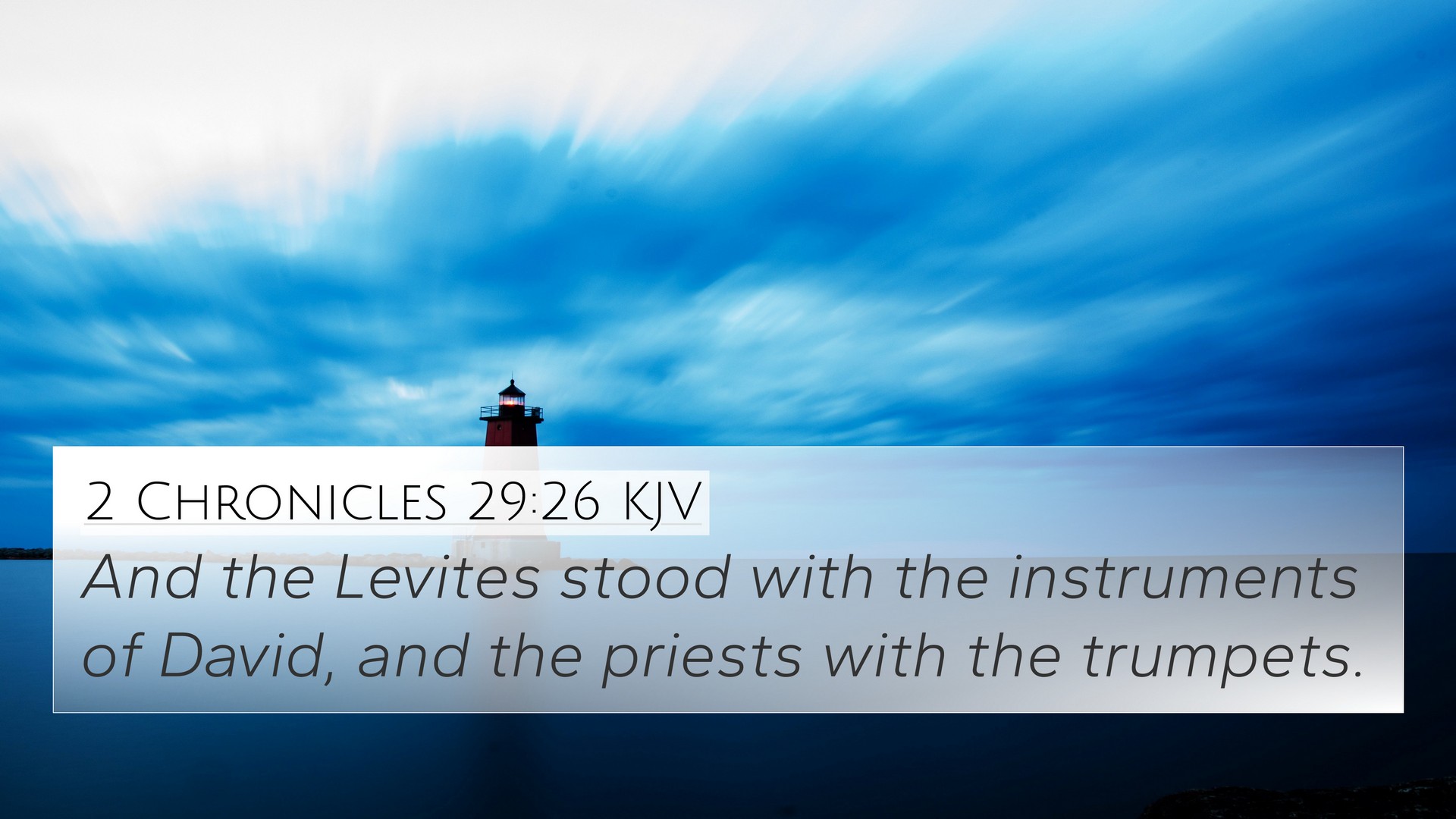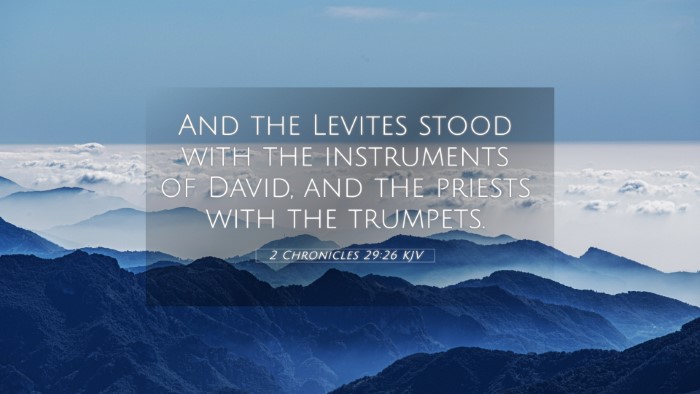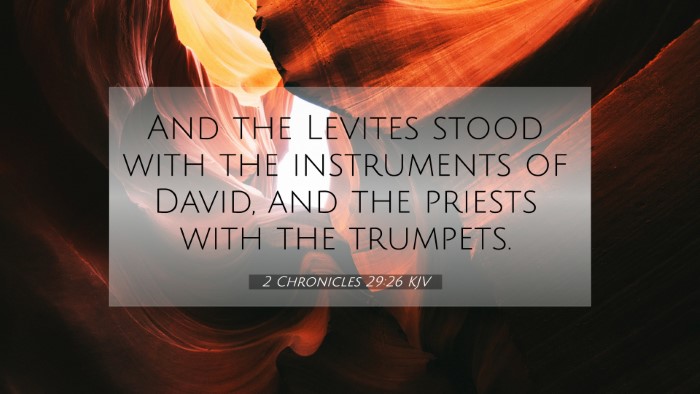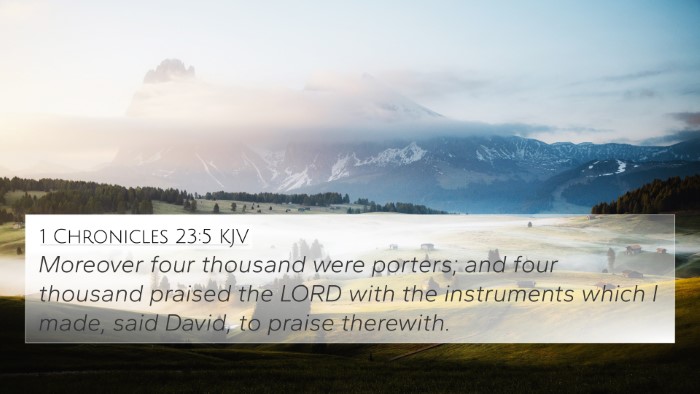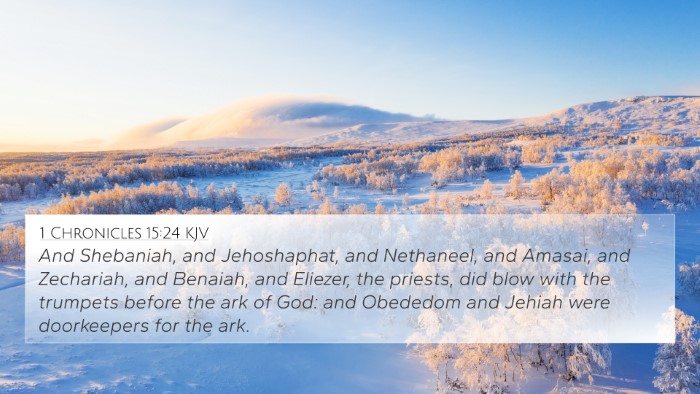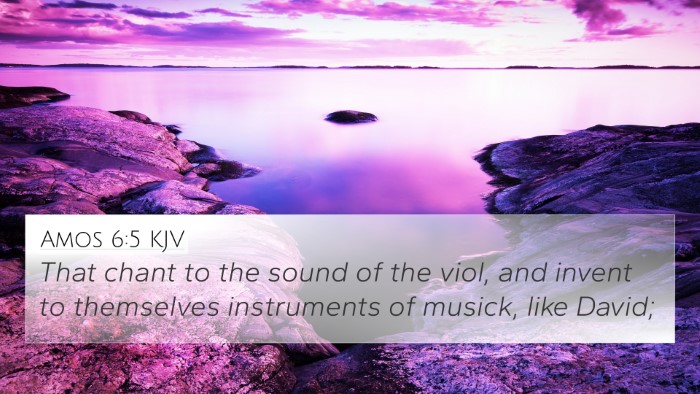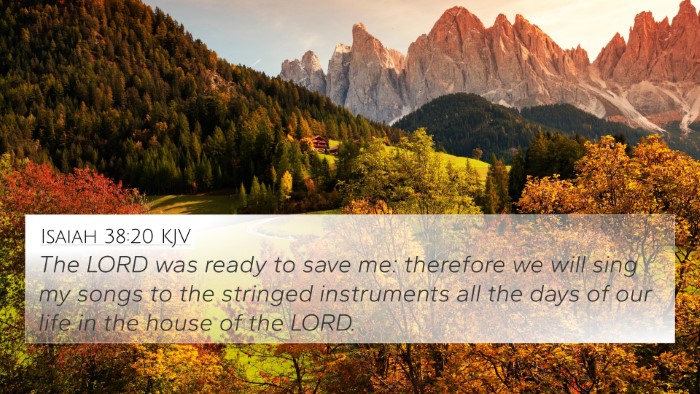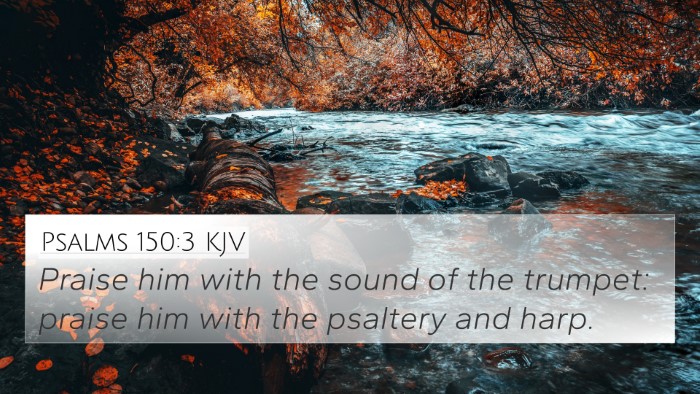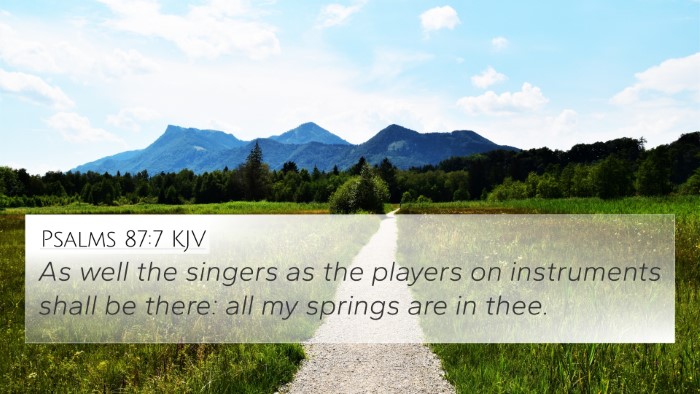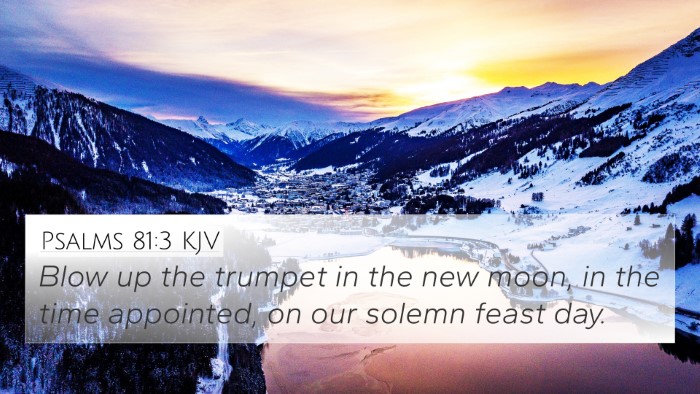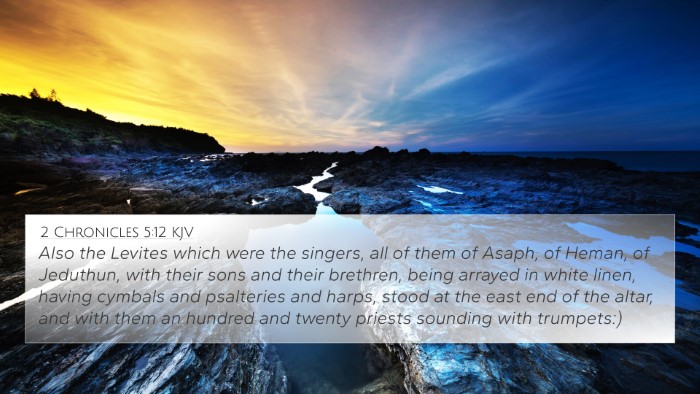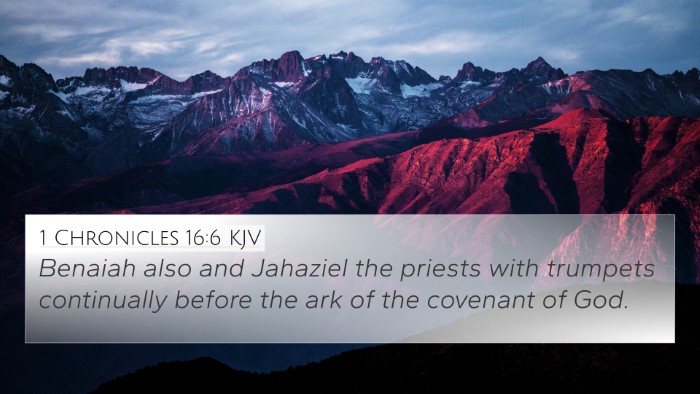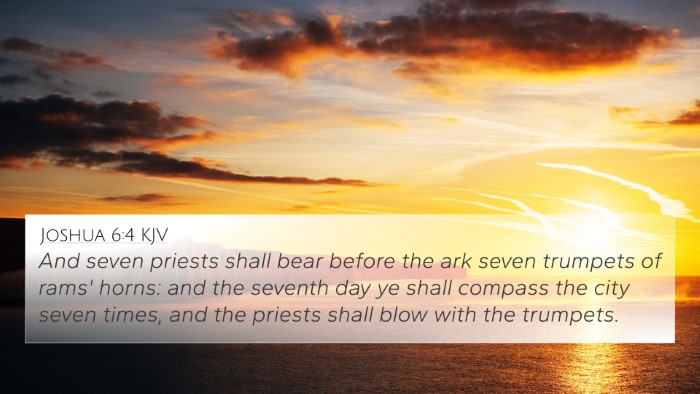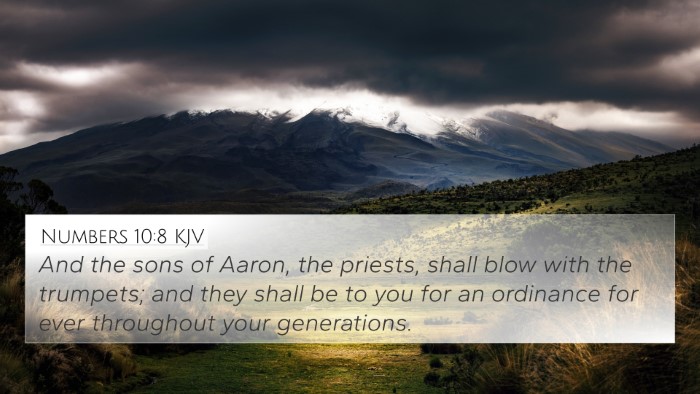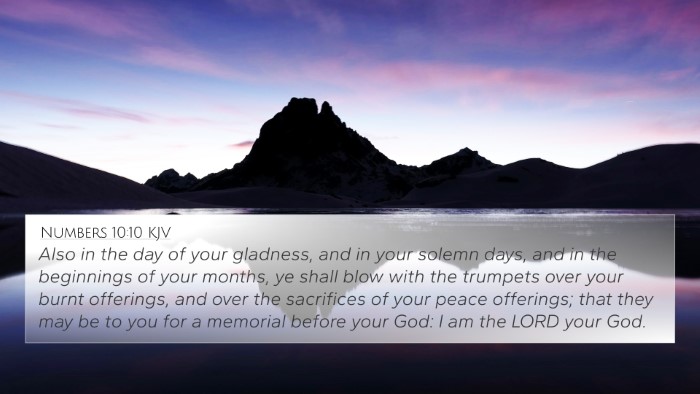Understanding 2 Chronicles 29:26
Verse: "And the Levites stood with the instruments of David, and the priests with trumpets." - 2 Chronicles 29:26
Introduction
The passage from 2 Chronicles 29:26 encapsulates a significant moment in the restoration of worship in the temple during King Hezekiah's reign. This verse emphasizes the importance of music and instruments in the worship of God, showcasing a structured and harmonious system of praise.
Meaning and Interpretation
To better understand this verse, we can explore interpretations from various public domain commentaries, bringing together insights from Matthew Henry, Albert Barnes, and Adam Clarke.
Matthew Henry's Commentary
According to Matthew Henry, this verse highlights the revival of true worship in Israel. He notes that the Levites played a crucial role in the temple services, utilizing instruments that were designated for the glorification of God. This revival signifies a return to obedience and reverence after periods of spiritual decline, where proper worship practices had been neglected.
Albert Barnes's Commentary
Albert Barnes adds that the instruments of David are emblematic of a rich historical tradition of worship. He points out that King Hezekiah’s reforms were not merely about cessation from idolatry but also included restoring the formal aspects of worship. The trumpets held by the priests were significant in indicating divine presence and calling the people to worship together. Barnes emphasizes this act as a collective return to fidelity to God's covenant, underscoring community worship as a vital aspect of faith.
Adam Clarke's Commentary
Adam Clarke focuses on the instruments used and their purpose in worship settings. He elaborates on the cultural significance of music in the temple, stating that these instruments were not merely for show; they were essential in expressing the congregation's reverence. Clarke highlights that the unity between the Levites and priests symbolizes harmony in worship and the acknowledgment of God’s sovereignty throughout Israel’s history.
Key Themes and Connections
This verse embodies key themes of worship, restoration, and community in biblical faith. The historical context provides rich insights into Israel's spiritual journey and their collective identity centered around the worship of Yahweh. Below are some relevant connections with other Bible verses that share similar themes.
- 1 Chronicles 15:16: "And David spake to the chief of the Levites to appoint their brethren to be the singers with instruments of musick..." - This verse reflects the organization of musical worship, establishing the basis for worship practices.
- Psalm 150:3-6: "Praise him with the sound of the trumpet: praise him with the sultry and harp..." - A call to utilize instruments in worship, reinforcing the message of 2 Chronicles 29:26.
- Neh. 12:27: "And at the dedication of the wall of Jerusalem they sought the Levites out of all their places, to bring them to Jerusalem..." - This passage connects the themes of celebration and community worship to significant moments in Israel's history.
- Zephaniah 3:17: "The LORD thy God in the midst of thee is mighty; he will save..." - God's presence assures the worship community, mirroring the collective worship described in 2 Chronicles.
- Psalm 68:24-25: "They have seen thy goings, O God; even the goings of my God, my King, in the sanctuary. The singers went before..." - This highlights the role of singers and musicians, relevant to the structured worship highlighted in the verse.
- Luke 19:37-40: "And when he was come nigh, even now at the descent of the mount of Olives, the whole multitude of the disciples began to rejoice..." - This depicts the continuity of joyful worship in both the Old and New Testaments.
- Revelation 5:8-9: "And when he had taken the book, the four beasts and four and twenty elders fell down before the Lamb, having every one of them harps..." - Indicates the eternal aspect of worship, linking it back to the practices reinstated under Hezekiah.
Thematic Connections
The thematic connections between this verse and others reflect on the patterns of worship throughout Scripture. These connections illustrate specific methods of cross-referencing Biblical texts, from Old Testament practices of worship to New Testament fulfillment in Christ.
Cross-Referencing and Analysis
This careful cross-referencing provides valuable insights for those engaged in Bible studies. Tools for Bible cross-referencing emphasize the importance of understanding the traditions of the faith and the means through which communities worship and express their devotion.
Conclusion
In summary, 2 Chronicles 29:26 serves as a pivotal verse embodying the significance of orchestrated praise in worship and highlights the restoration of proper worship practices in Israel. The collaborative roles of Levites and priests confirm the importance of community in glorifying God with music and instruments, underscoring an ongoing dialogue within Scriptures that enriches our understanding of biblical worship.
Keywords Summary
The insights drawn from public domain commentaries enrich the thematic Bible verse connections that resonate throughout the text. Biblical cross-references create a web of interconnected scriptures that guide believers in understanding themes, concepts, and historical contexts enriching their study of the Word.
